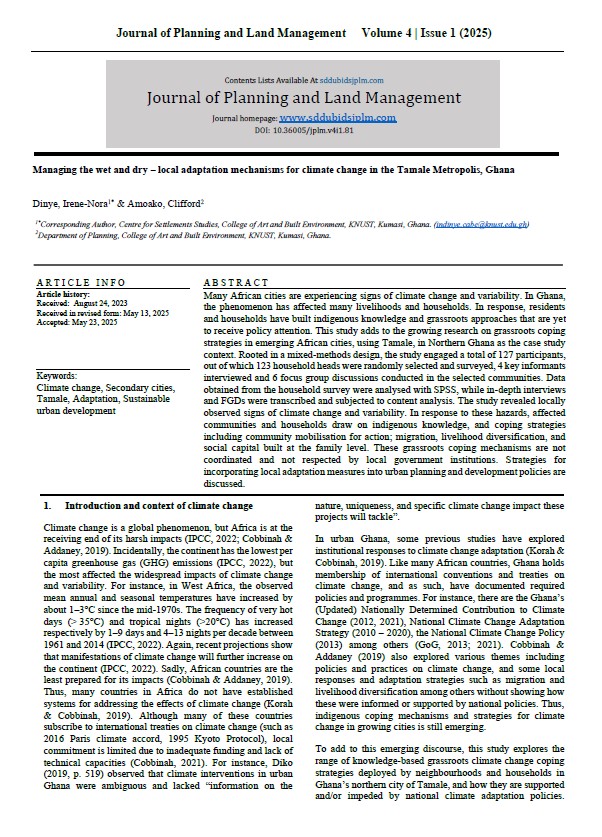Managing the wet and dry – local adaptation mechanisms for climate change in the Tamale Metropolis, Ghana
DOI:
https://doi.org/10.36005/jplm.v4i1.81Keywords:
Secondary Cities, Tamale, Adaptation, Sustainable Urban Development, Climate ChangeAbstract
Many African cities are experiencing signs of climate change and variability. In Ghana, the phenomenon has affected many livelihoods and households. In response, residents and households have built indigenous knowledge and grassroots approaches that are yet to receive policy attention. This study adds to the growing research on grassroots coping strategies in emerging African cities, using Tamale, in Northern Ghana as the case study context. Rooted in a mixed-methods design, the study engaged a total of 127 participants, out of which 123 household heads were randomly selected and surveyed, 4 key informants interviewed and 6 focus group discussions conducted in the selected communities. Data obtained from the household survey were analysed with SPSS, while in-depth interviews and FGDs were transcribed and subjected to content analysis. The study revealed locally observed signs of climate change and variability. In response to these hazards, affected communities and households draw on indigenous knowledge, and coping strategies including community mobilisation for action; migration, livelihood diversification, and social capital built at the family level. These grassroots coping mechanisms are not coordinated and not respected by local government institutions. Strategies for incorporating local adaptation measures into urban planning and development policies are discussed.
Downloads

Downloads
Published
How to Cite
Issue
Section
License
Copyright (c) 2025 Journal of Planning and Land Management

This work is licensed under a Creative Commons Attribution-NonCommercial 4.0 International License.








